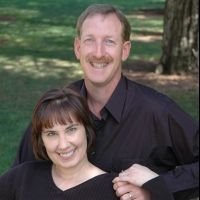Since I finished a book on the Old Testament, I thought I would try my hand and trying to make it an online study. Some of the reason I'm doing this is completely selfish. I figure if I have to regurgitate it, I'll learn it better. Who knows, this might be the beginning of a class we offer at church. Who knows! I hope you enjoy it. I hope I do too! :-) Taken from the book "Putting Together the Puzzle of the Old Testament" by Bill Jones.
We find that this puzzle has 39 pieces, the 39 books of the Bible. They are arranged from Genesis to Malachi.
There are 3 categories of books of the old testament. First, the first 17 books are Historical in nature. They tell "His-story", chronologically from creation to the years before the coming of Christ. The first 5 of these 17 are called the Law or the Pentateuch. (Genesis, Exodus, Leviticus, Numbers, and Deuteronomy) The next 12 are called History (Joshua through Esther) Follow along with your table of contents in your Bible.
The next 5 are Poetical books. (Job, Psalms, Proverbs, Ecclesiastes, and Song of Solomon) Job teaches us how to respond to suffering. Psalms teach us how to worship God, Proverbs is known as the book of wisdom, Ecclesiastes teaches how to live a life of significance by showing how much of what we do leads to vanity or emptiness. Sons of Solomon speaks about true love.
The last 17 are prophetical books. The first 5 of these are called the major prophets. (Isaiah, Jeremiah, Lamentations, Ezekiel, and Daniel) The next 12 are called the minor prophets. (Hosea through Malachi)
Each of these three areas or categories has a particular focus. The historical books focus on the past. They cover "His-story" 8 times. The poetical books focus on the present and contain 5 topics of interest. The prophetical books focus on the future and contain 5 types of prophesy. Cool, huh?
When we look at the first 17 or historical books, it is important to note that not all the books contain historical content. All but 4 do however. The four that don't (Ruth, 1 & 2 Chronicles, and Esther) contain historical commentary.
Now that you have a good structure to start with, let's look at giving a name to each of the 8 eras of the old testament. As I go through this study, I will explore each era in more detail. For now, here is the starting place.
Nothing Era------The human race out of nothing
Something Era---The Hebrew race into something
Exiting Era-------Exiting Egypt
Entering Era-----Entering Canaan
United Era-------United kings stand
Divided Era------Divided kings fall
Scattered Era----Scattered Judah
Gathered Era-----Gathered Judah
If you can memorize the eras, that would be a big help. If you would like to read in preparation for the next lesson, you can read Genesis chapters 1-11. As a bonus, memorize the books of the old testament. It's good exercise for your brain!
Next time we'll cover the nothing era. Have a blessed sunny, cool, breezy Monday!
Subscribe to:
Post Comments (Atom)

No comments:
Post a Comment